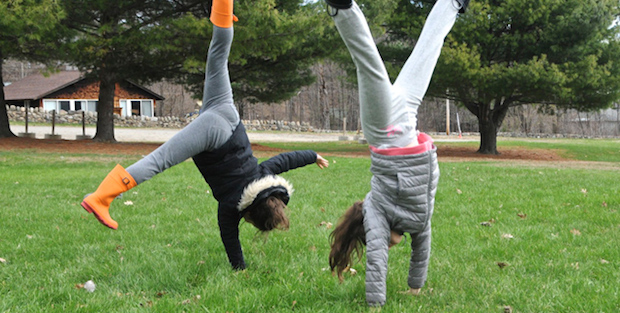Last June, several educators from the Lycée Français de New York, including myself, attended the annual conference of the International Society for Technology in Education (ISTE). In addition to participating in many sessions related to ISTE’s mission of “advancing excellence in learning and teaching through the innovative and effective uses of technology in PK–12 and teacher education”, we had an opportunity to hear a memorable keynote address from Kevin Carroll, author of a best-selling book on “the spirit of play and creativity” entitled Rules of the Red Rubber Ball.
What I most recall from Mr. Carroll’s mesmerizing presentation was his message that everyone, young and old alike, should always approach what they are doing with a sense of fun. Why? Because in adopting a playful outlook, we are more likely actually to have fun, which is an important source of happiness, but, even more significant, we are more likely too to sharpen one of the most valuable skills needed for success in the 21st Century: creativity.
Having fun learning sharpens creativity
Bearing Carroll’s insights in mind, I have made it a habit of carrying with me whenever I am walking around school a puzzle or a riddle or some other form of what in the United States would be called a brainteaser, defined by the Merriam-Webster dictionary as “something…that demands mental effort and acuity for its resolution”, ready to be shared with our students at the earliest chance. They love a good enigma, especially, it appears, when the problem has a mathematical dimension, something like the following: “A person possesses two different jars, one that can hold three liters of water and another that can contain five liters of water. If one needs exactly four liters of water, how does one use the two jars to arrive at the quantity sought.” Or: “once upon a time, there were two swans standing in front of a man, two swans behind a swan, and one swan in the middle. How many swans are there?” Or yet again: “Your bedroom clock is broken and every hour it gains 36 minutes. Exactly one hour ago, the clock stopped, indicating the time of 8:24 AM. And you know that it showed the right time at 2:00 AM. Can you tell me what time is it now?”
Riddles and productive play
Of course, the delight which our primary and secondary students take in tackling such puzzles needs little encouragement from me. The joy with which they go about what Kevin Carroll would describe as “productive play”, understood as activity that is at once instructive and amusing, is clearly innate. Moreover, I know that it is carefully cultivated by their families and purposefully nurtured by our faculty who strive to make learning a process which teaches both logical, structured critical thinking and free-ranging, outside-of-the box creativity, surely a fitting combination for our times. As a result, I was not in the least surprised a week ago when one of our middle schoolers not only found the answer to the riddle I had posed him, but, with the excitement which only play can generate, presented me with his own entertaining problem to solve.
Sir, he affirmed, with a HUGE smile, though I should probably say grin. Imagine you are standing outside of a room containing a single light bulb, which is off, but the door to the room is closed. You are only able to open it up and to go into the room once. With the door closed, you are completely unable to see anything taking place in the room. Outside of the room, there are three identical light switches; however, only one of them is attached to the light bulb and able to turn it on. Knowing that you have the right to turn the light switches on and off as many times as you wish, but as already mentioned you can only enter the room once before making a decision, how you would figure out which of the three light switches is the correct one? Okay, I joked, the play must go on, no puns intended. And I took up the challenge.
About the Author :
Sean Lynch was Head of School at the Lycée Français de New York from 2011 to 2018, after having spent 15 years at another French bilingual school outside of Paris: the Lycée International de St. Germain-en-Laye. Holding both French and American nationalities, educated in France (Sciences Po Paris) and the United States (Yale), and as the proud husband of a French-American spouse and father of two French-American daughters, Sean Lynch has spent his entire professional and personal life at the junction between the languages, cultures and educational systems of France and the United States. In addition to being passionate about education, he loves everything related to the mountains, particularly the Parc National du Mercantour.

